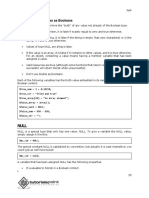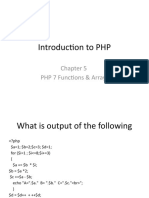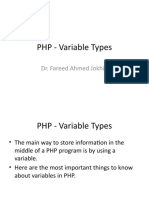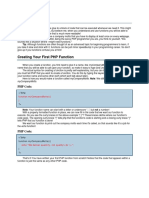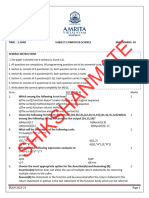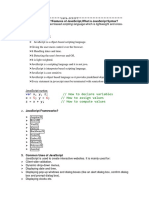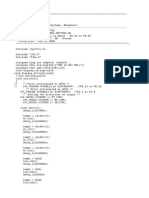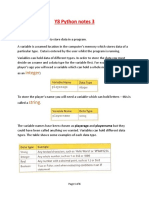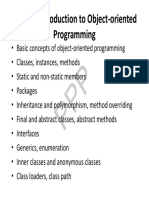0% found this document useful (0 votes)
95 views20 pagesPHP Function Basics for Beginners
The document discusses PHP functions and how to use them. It explains that functions allow programmers to break programs into smaller, more manageable pieces of code. It then provides examples of PHP functions that test variable status, such as is_numeric(), is_set(), and empty(). The document demonstrates how to define basic functions using the function keyword and pass parameters to customize functions. It also explains how functions can return values to be used elsewhere in a program.
Uploaded by
Mariam WahabCopyright
© © All Rights Reserved
We take content rights seriously. If you suspect this is your content, claim it here.
Available Formats
Download as PPTX, PDF, TXT or read online on Scribd
0% found this document useful (0 votes)
95 views20 pagesPHP Function Basics for Beginners
The document discusses PHP functions and how to use them. It explains that functions allow programmers to break programs into smaller, more manageable pieces of code. It then provides examples of PHP functions that test variable status, such as is_numeric(), is_set(), and empty(). The document demonstrates how to define basic functions using the function keyword and pass parameters to customize functions. It also explains how functions can return values to be used elsewhere in a program.
Uploaded by
Mariam WahabCopyright
© © All Rights Reserved
We take content rights seriously. If you suspect this is your content, claim it here.
Available Formats
Download as PPTX, PDF, TXT or read online on Scribd
/ 20









